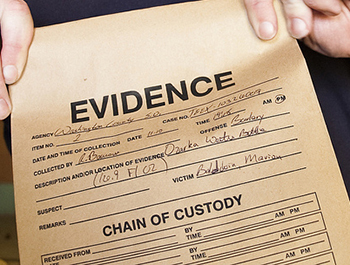 The strength of the evidence for a proposition is best
measured in terms of the ratio of two probabilities, P(E|H) and P(E|~H) -- that is, the probability of the evidence (E) given that the hypothesis (H) is true, and the probability of E given that H is false. That
ratio may be top heavy (in which case E favors H), bottom heavy, or neither (in
which case E favors neither hypothesis, and we would not call it evidence for
or against H). Bayes’ Theorem is a mathematical tool for modelling our
evaluation of evidences to appropriately apportion the confidence in our
conclusions to the strength of the evidence.
The strength of the evidence for a proposition is best
measured in terms of the ratio of two probabilities, P(E|H) and P(E|~H) -- that is, the probability of the evidence (E) given that the hypothesis (H) is true, and the probability of E given that H is false. That
ratio may be top heavy (in which case E favors H), bottom heavy, or neither (in
which case E favors neither hypothesis, and we would not call it evidence for
or against H). Bayes’ Theorem is a mathematical tool for modelling our
evaluation of evidences to appropriately apportion the confidence in our
conclusions to the strength of the evidence.To take an example, suppose that P(E1|H) = 0.2, but P(E1|~H) = 0.04. Then the ratio P(E1|H)/P(E1|~H) has the value of 5 to 1, or just 5. If there are multiple pieces of independent evidence of the same sort, their power accumulates exponentially. Five such pieces would yield a cumulative ratio of 3125 to 1. If the initial ratio were 2 to 1, ten pieces of independent evidence would have a cumulative power of more than 1000 to 1. By expressing it in mathematical terms like this, hopefully you can see how small pieces of evidence, no single piece by itself of very great weight, can combine to create a massive cumulative case.
The equation given below represents the odds form of Bayes
theorem, which is used in developing cumulative cases. Translated, it states
that the posterior probability of your hypothesis (H) given the available
evidence (E) is equal to the prior probability (defined as intrinsic
plausibility) of the hypothesis being true (expressed as a ratio) multiplied by
the ratio of the evidence given the hypothesis against the probability of the
evidence given the antithesis.
Dividing the probability of the evidence given the
hypothesis by the probability of the evidence given the antithesis gives you
what is referred to in probability theory as the Bayes Factor. The Bayes Factor
is a measure of the strength of the evidence, and indicates how many times more
likely it is that you will observe this evidence given that your hypothesis is
true than if it were false. For instance, a Bayes Factor of one hundred
indicates that your evidence is one hundred times more likely if your
hypothesis is true than if it were false.
This form of reasoning is used routinely in the discipline
of forensic science. For instance, the presence of a defendant’s finger prints
on a murder weapon may be taken as evidence for the hypothesis of guilt over
the hypothesis of non-guilt because the probability of the defendant’s finger
prints being on the murder weapon is much higher on the hypothesis that the
defendant is guilty than on the hypothesis that he is not guilty.
How might we make a powerful case for the existence of God
based on what we have just learned about Bayes Theorem? We can begin by giving
an estimate of the probability of the evidence given theism and the probability
of the evidence given atheism, in order to calculate the Bayes Factor.



